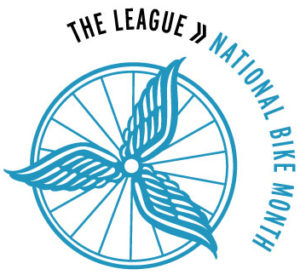 Brakes
Brakes
We all love to GO. Isn’t that why you got your bicycle in the first place? GO to lose weight. GO to get fit. GO to the store. GO fast. GO, GO, GO…
But, at some point, you have to come to a stop, or at least slow down. Whether it’s the end of your commute or training ride, or you come to a stop sign (yes “stop”), or someone or something steps in front of you and you need to stop to avoid crashing – you need a way to slow down.
You don’t see very much written about one of the most crucial pieces of gear on your bike – the brake. We take them for granted, until they’re not there.
Brakes have evolved over the years, with the early cyclists using the Spoon Brake on their Penny Farthings to slow as best they could. The Spoon Brake often was shaped like a shoe horn and was fitted on top of the front tire. Made of leather or metal, downward pressure was applied by the cyclist to slow the bicycle. This was first used in the 1880s, continuing well into the early parts of the 20th century. Versions are still used today in some developing countries.
The Duck Brake was invented in 1897 and operated by the cyclists pressing a lever installed on the handlebars, which compressed rollers against the front tire.
Coaster brakes. These are the bicycle brakes that we LOVED growing up. Not a better feeling than to get up to a high speed, back pedal to engage the brake - and leave half the rubber of your tire as a mark of dominance on the sidewalk. These are still installed on many of the childrens bikes sold at major chain retail stores.
Todays Mainstream
Rim Brakes of various forms have been the "go to technology" since their introduction. Most operate using the caliper design, which uses cables to compress pads against the rim of the wheel to slow motion. Even today, most road bikes are equipped with brake systems using a tight side caliper configuration. This works well on the road, but not so much with cyclocross and mountain bikes, where mud and debris can hinder operation and the ability to stop - or can prevent the wheel from turning. Caliper brake systems used for these bikes have a more open configuration, sometimes with a center caliper design that is easily accessed and cleaned. It should be noted that the one big downside of rim brakes are the decreased dependability in wet weather. Depending on the wetness of the rims and brake pads, you often find yourself unable to stop at all if you get caught out in the rain.
Disc brakes are now the standard for most mid to high end mountain bikes and are now appearing mainstream on Road and Cyclo-Cross bikes. Disc brakes operate in a closed system and are less affected by the elements (rain, mud, etc) than their Rim Brake counterparts. There is an evolution occurring with the development of lighter dependable technology, enabling hydraulically driven disc brakes to move into the world of high end road bikes. This technology is especially helpful for a commuter, who wants brakes that will dependably work, regardless of weather conditions.
Track. When dealing with the track bike, one thing you realize very early on is that these bikes have NO BRAKES! – well, except for your legs. Brakes on these bikes would be a safety issue, believe it or not. Use of mechanical brakes in the sometimes close quarters on the track could have disastrous consequences, hence you have to let yourself gradually slow down or apply backwards pressure with your legs. Not as hard as you would think, and a great workout.
History of Bicycle Brakes
